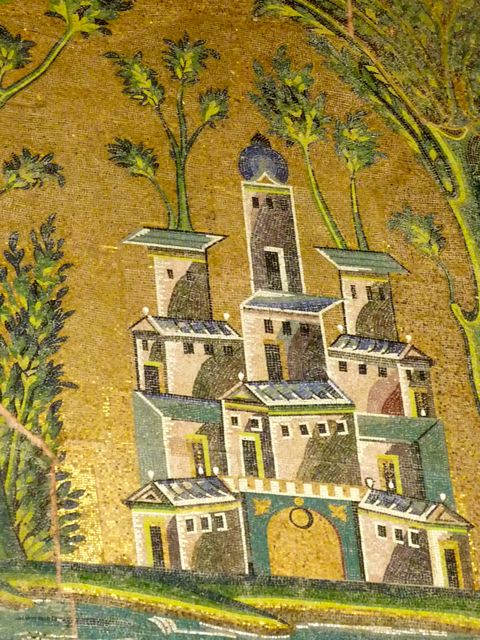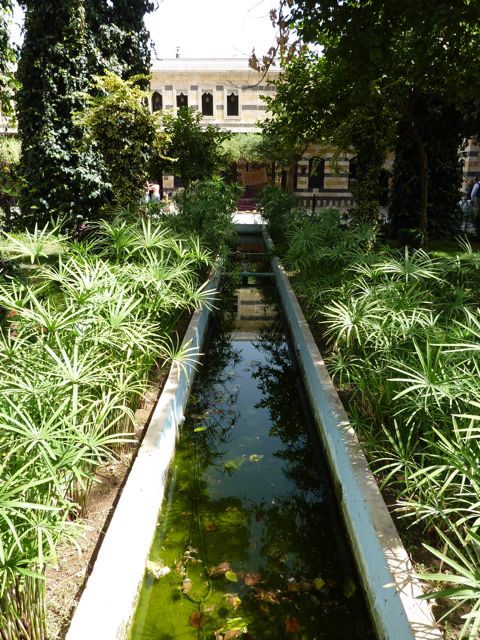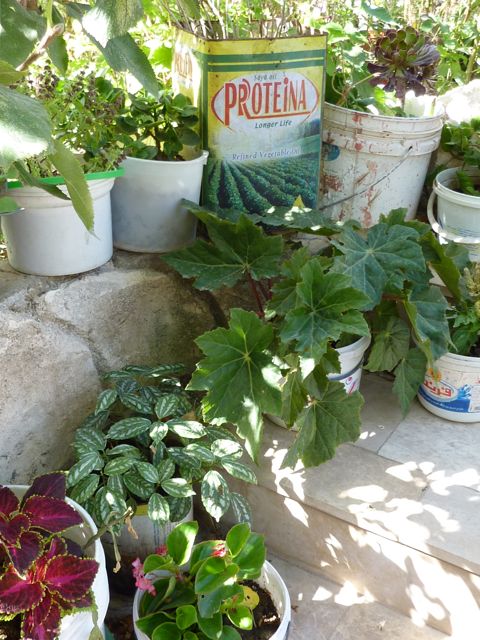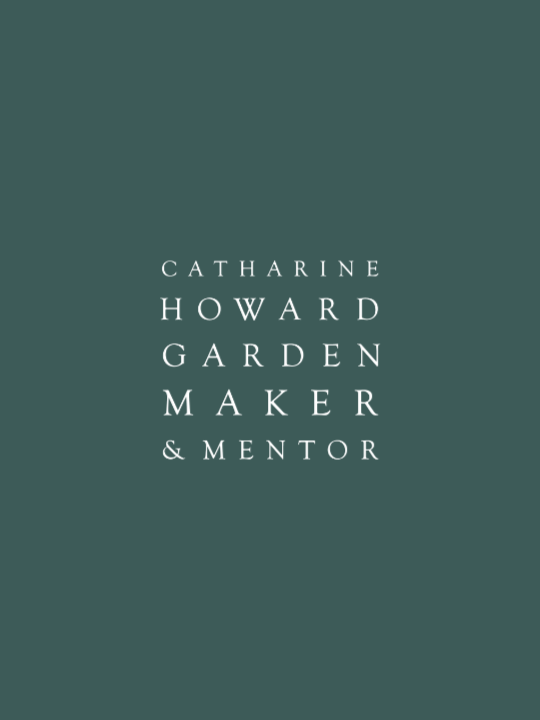
Damascene rose, damask fabric and as the guidebook would have it, Dimashq. The old town is an ellipse - bounded more or less by walls and divided up into different districts - the original pattern is christian, jewish, muslim. The oldest inhabited city in the world, perhaps. The Romans came and went, Tamerlane shot through, stealing all the craftsmen to take to work on Samarkand. The Prophet is said to have marvelled and passed on.
Old Damascus is all about trading, and its souk dazzles with streets selling spices, herbalist cures, bedoin robes, qurans, stationery, kitchenware, risque underwear, stuffed hyenas and meat. The city of fabrics for carpets, tableclothes, shawls in dancing colours. Dancing colours follow through to ceramic tiles and bowls. And over and over again the stylised beauty of flowers as inspiration and design.
A calm and entrancing sanctuary at the heart of dusty and buzzing streets, is the Omayad mosque, with large and lovely marble courtyard. After Mecca and Medina, it is the third most holy building in Islam. The courtyard is a good place to relax, to sit on the ground in the shade and meditate on the brilliance of a series of mosaics of towns set in a tree-filled landscape.

Despite the dust, heat and lack of rain, Damascus is a town of gardens. Hidden gardens in courtyards. Touristing round the streets is a little bewildering: long sharp shadows, twisting corners and narrow lanes. Carved doors, often double and with Fatima's hand as a knocker, are firmly shut. But the family sanctuary within will have fountains and trees. It's the architecture that the moors took to Seville. The restored Azim palace, an Ottoman building from the 18th shows the splendour of this way of living. At the garden's centre there is a rill flanked by an outbreak of papyrus.
Damascus commands a dry and dustbowl hinterland. There has been no proper rainfall for months. Drive out of the city in any direction and riven rock and sparse vegetation will not wrench the gaze from a bewildering assortment of half completed grandiose building schemes. Eucalyptus and olive groves make an exception to this as do well irrigated market gardens and some interesting looking plant nurseries on the road to the airport. Alas too late by then to stop and buy a damascene rose.
Up in the hills, it is normally green.

At the Homs gap is the strategic holding place of the Crusaders at Krak de Chevaliers. An impregnable castle from which they dominated a whole fertile valley to feed a garrison of 3000. And kept the dark castle rooms lit by olive oil. Right now it is crispbone dry. What about rain? Here it rains very often said the guide. The brackish water in the Krak's holding tank told it differently.
Parched circumstances do not foil a love of gardening and all over Damascus climbers like Virginia Creeper and bouganvillea crack out of the very pavement to clamber up the buildings and break into leafy shade. Pots are made out of oil drums, ghee tins and kept going despite drought and dust storms.
The land of Syria is the setting for many Biblical events: the room that Saul went to after his blinding on the way to Damascus is there to be visited, so is Abel's tomb. Mesopotamia, not so long a journey away, was where the Garden of Eden was found. Syria is a land of plant lovers.

 Damascene rose, damask fabric and as the guidebook would have it, Dimashq. The old town is an ellipse - bounded more or less by walls and divided up into different districts - the original pattern is christian, jewish, muslim. The oldest inhabited city in the world, perhaps. The Romans came and went, Tamerlane shot through, stealing all the craftsmen to take to work on Samarkand. The Prophet is said to have marvelled and passed on.
Old Damascus is all about trading, and its souk dazzles with streets selling spices, herbalist cures, bedoin robes, qurans, stationery, kitchenware, risque underwear, stuffed hyenas and meat. The city of fabrics for carpets, tableclothes, shawls in dancing colours. Dancing colours follow through to ceramic tiles and bowls. And over and over again the stylised beauty of flowers as inspiration and design.
A calm and entrancing sanctuary at the heart of dusty and buzzing streets, is the Omayad mosque, with large and lovely marble courtyard. After Mecca and Medina, it is the third most holy building in Islam. The courtyard is a good place to relax, to sit on the ground in the shade and meditate on the brilliance of a series of mosaics of towns set in a tree-filled landscape.
Damascene rose, damask fabric and as the guidebook would have it, Dimashq. The old town is an ellipse - bounded more or less by walls and divided up into different districts - the original pattern is christian, jewish, muslim. The oldest inhabited city in the world, perhaps. The Romans came and went, Tamerlane shot through, stealing all the craftsmen to take to work on Samarkand. The Prophet is said to have marvelled and passed on.
Old Damascus is all about trading, and its souk dazzles with streets selling spices, herbalist cures, bedoin robes, qurans, stationery, kitchenware, risque underwear, stuffed hyenas and meat. The city of fabrics for carpets, tableclothes, shawls in dancing colours. Dancing colours follow through to ceramic tiles and bowls. And over and over again the stylised beauty of flowers as inspiration and design.
A calm and entrancing sanctuary at the heart of dusty and buzzing streets, is the Omayad mosque, with large and lovely marble courtyard. After Mecca and Medina, it is the third most holy building in Islam. The courtyard is a good place to relax, to sit on the ground in the shade and meditate on the brilliance of a series of mosaics of towns set in a tree-filled landscape.
 Despite the dust, heat and lack of rain, Damascus is a town of gardens. Hidden gardens in courtyards. Touristing round the streets is a little bewildering: long sharp shadows, twisting corners and narrow lanes. Carved doors, often double and with Fatima's hand as a knocker, are firmly shut. But the family sanctuary within will have fountains and trees. It's the architecture that the moors took to Seville. The restored Azim palace, an Ottoman building from the 18th shows the splendour of this way of living. At the garden's centre there is a rill flanked by an outbreak of papyrus.
Damascus commands a dry and dustbowl hinterland. There has been no proper rainfall for months. Drive out of the city in any direction and riven rock and sparse vegetation will not wrench the gaze from a bewildering assortment of half completed grandiose building schemes. Eucalyptus and olive groves make an exception to this as do well irrigated market gardens and some interesting looking plant nurseries on the road to the airport. Alas too late by then to stop and buy a damascene rose.
Up in the hills, it is normally green.
Despite the dust, heat and lack of rain, Damascus is a town of gardens. Hidden gardens in courtyards. Touristing round the streets is a little bewildering: long sharp shadows, twisting corners and narrow lanes. Carved doors, often double and with Fatima's hand as a knocker, are firmly shut. But the family sanctuary within will have fountains and trees. It's the architecture that the moors took to Seville. The restored Azim palace, an Ottoman building from the 18th shows the splendour of this way of living. At the garden's centre there is a rill flanked by an outbreak of papyrus.
Damascus commands a dry and dustbowl hinterland. There has been no proper rainfall for months. Drive out of the city in any direction and riven rock and sparse vegetation will not wrench the gaze from a bewildering assortment of half completed grandiose building schemes. Eucalyptus and olive groves make an exception to this as do well irrigated market gardens and some interesting looking plant nurseries on the road to the airport. Alas too late by then to stop and buy a damascene rose.
Up in the hills, it is normally green.  At the Homs gap is the strategic holding place of the Crusaders at Krak de Chevaliers. An impregnable castle from which they dominated a whole fertile valley to feed a garrison of 3000. And kept the dark castle rooms lit by olive oil. Right now it is crispbone dry. What about rain? Here it rains very often said the guide. The brackish water in the Krak's holding tank told it differently.
Parched circumstances do not foil a love of gardening and all over Damascus climbers like Virginia Creeper and bouganvillea crack out of the very pavement to clamber up the buildings and break into leafy shade. Pots are made out of oil drums, ghee tins and kept going despite drought and dust storms.
The land of Syria is the setting for many Biblical events: the room that Saul went to after his blinding on the way to Damascus is there to be visited, so is Abel's tomb. Mesopotamia, not so long a journey away, was where the Garden of Eden was found. Syria is a land of plant lovers.
At the Homs gap is the strategic holding place of the Crusaders at Krak de Chevaliers. An impregnable castle from which they dominated a whole fertile valley to feed a garrison of 3000. And kept the dark castle rooms lit by olive oil. Right now it is crispbone dry. What about rain? Here it rains very often said the guide. The brackish water in the Krak's holding tank told it differently.
Parched circumstances do not foil a love of gardening and all over Damascus climbers like Virginia Creeper and bouganvillea crack out of the very pavement to clamber up the buildings and break into leafy shade. Pots are made out of oil drums, ghee tins and kept going despite drought and dust storms.
The land of Syria is the setting for many Biblical events: the room that Saul went to after his blinding on the way to Damascus is there to be visited, so is Abel's tomb. Mesopotamia, not so long a journey away, was where the Garden of Eden was found. Syria is a land of plant lovers.

